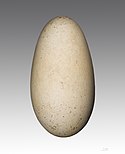Log of the Kaalokai. (1909) (14778556892)
Walker, F.d;
Kaalokai (Schooner)Identifier: logofkaalokai00walk (find matches)
Title: Log of the Kaalokai.
Year: 1909 (1900s)
Authors: Walker, F.d Kaalokai (Schooner)
Subjects:
Publisher: Honolulu, HI. : The Hawaiian Gazette Co., Ltd.
Contributing Library: Brigham Young University Hawaii, Joseph F. Smith Library
Digitizing Sponsor: Consortium of Church Libraries and Archives
View Book Page: Book Viewer
About This Book: Catalog Entry
View All Images: All Images From Book
Click here to view book online to see this illustration in context in a browseable online version of this book.
Text Appearing Before Image:
out. You dont say so—poor old chap!How he did love his lush. Miss Doughnuts gotmarried. You dont say so. Whom did shemarry? Young Lovespoon, in the bank. JimBighead has been left a fortune and goneaway for good. May the devil go with him, heowes me five dollars! And so on, till we an-chored on the northwest side of the island, andwent ashore. June 16th to June 20th.—Laysan Island waspractically unknown, except to a very few, un-til 1890, when some samples of phosphate werebrought from thence to Honolulu. An analy-sis wras made, and proved satisfactory. Asmall steamer called the Akamai was sentto Laysan under charge of Mr. Freeth, and athorough investigation made. On its returnto Honolulu a company was formed under theauspices of the Pacific Guano and FertilizerCompany, and a settlement made. Mr. Freethassumed charge under the high sounding titleof Governor Freeth. He relinquished his posi-tion many years ago, and Hawaii nei mournsits loss. At the time of our visit the buildings 28
Text Appearing After Image:
were about all completed. A mule tramwaywas constructed to convey the phosphate tothe wharf. A watch-tower with a lanternserved as a lighthouse during the loadingmonths, April to the end of September. Thewinter months were utilized in filling thewarehouse with phosphate. Loading at Laysan is somewhat dangerous,as a change of wind from the northeast to thewestward, necessitates the ship to leave.Still, no vessel has ever been wrecked there;loss of anchors, however, is not an infrequentoccurrence. If I were asked who discovered Laysan Is-land, I should have to reply, as the boy didwhen he was asked who signed the MagnaCharter: Please sir, it wasnt me. Laysan Island has a distinguishing featurefrom the other islands in the chain, in that ithas a small bird which runs along the ground;its wings are so small they resemble nippersmore than wings. At first they were calledwingless birds, but a careful examinationshows them to be of the order Apteryges, ofwhich the New Zealand Apteryx is a ge
Note About Images
Relevantní obrázky
Relevantní články
TrubkonosíTrubkonosí (Procellariiformes) je řád mořských ptáků, který zahrnuje čeledi albatrosovitých (Diomedeidae), buřníčkovitých (Oceanitidae), buřňáčkovitých (Hydrobatidae) a buřňákovitých (Procellariidae). Tito kosmopolitní letci jsou hojně rozšíření napříč všemi oceány. Velikostí se jedná o extrémně diverzifikovanou skupinu, která zahrnuje jak jedny z největších ptáků schopných letu, tak jedny z nejmenších mořských ptáků vůbec. Poměrový rozdíl mezi největším a nejmenším zástupcem řádu je vůbec největší ze všech ptačích řádů. .. pokračovat ve čtení
AlbatrosovitíAlbatrosovití (Diomedeidae) je čeleď velkých mořských ptáků z řádu trubkonosých. Albatrosi patří k největším ptákům schopným letu; rozpětí křídel u největších jedinců z rodu Diomedea dosahuje přes 3,5 m. Čeleď albatrosovitých se dělí do čtyř rodů, a sice Diomedea, Thalassarche, Phoebetria a Phoebastria. Všechny mají stejné české jméno albatros. BirdLife International a ACAP uznávají 22 druhů albatrosů, avšak lze se setkat s 13–24 rozeznávanými druhy. .. pokračovat ve čtení










































